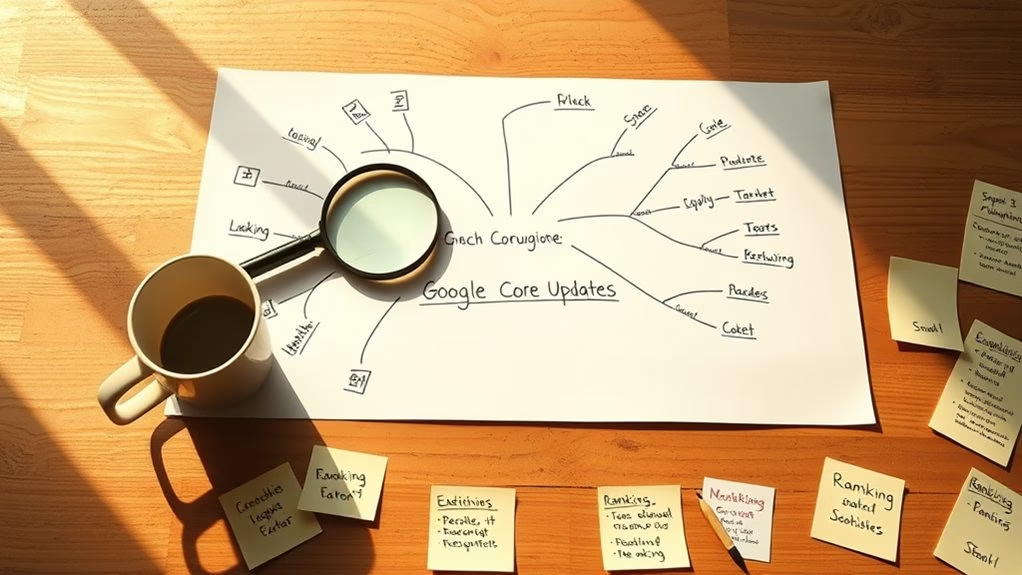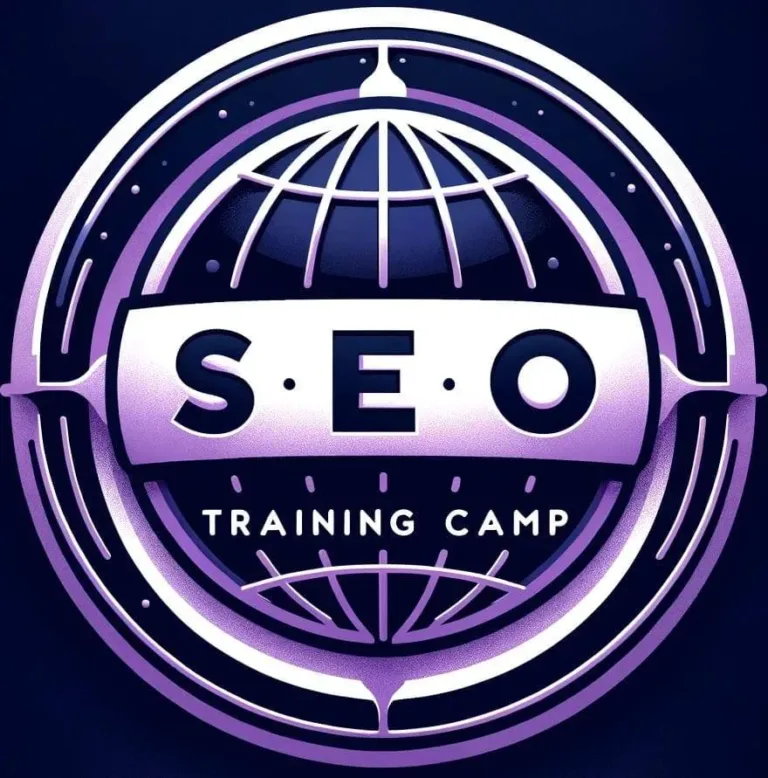Google’s Helpful Content Update represents a significant algorithmic shift in SEO practices, focusing on user-centric content quality and authentic proficiency. The update implements site-wide assessment mechanisms that evaluate page-level and domain-level quality metrics, potentially impacting up to 50% of low-quality content traffic. Core ranking factors now prioritize E.E.A.T. principles, user engagement metrics, and genuine topical authority. Successful SEO strategies require specific, actionable information, first-hand experience, and consistently publishing value-driven content. The update’s integration into core ranking systems in March 2024 signals a permanent evolution in how search engines evaluate and reward quality digital content.
Learn More
- Google’s Helpful Content Update evaluates entire websites for user-focused content quality, with potential traffic losses of up to 50% for low-quality pages.
- The update prioritizes content demonstrating E.E.A.T principles, requiring specific expertise, experience, and authoritative knowledge in the subject matter.
- Content creators must focus on solving specific user problems with actionable information rather than producing high volumes of generic content.
- The algorithm measures user engagement metrics, including time on page, conversion rates, and interaction depth, to determine content quality.
- To maintain rankings, sites must maintain regular content audits, update outdated information, and provide transparent source attribution.
What Is Helpful Content Update
Google’s Helpful Content Update represents a significant algorithmic shift designed to elevate content that genuinely serves user needs while demoting material created primarily for search engine manipulation.
The update evaluates content based on its ability to provide specific, actionable, and up-to-date information that connects with users, implementing a site-wide assessment mechanism rather than focusing on individual pages. Websites in the travel sector were among the hardest hit, with many publishers experiencing 90% drops in organic traffic. The system aims to ensure websites focus on deep knowledge rather than superficial coverage of topics.
The update operates through a sophisticated evaluation system that prioritizes people-first content demonstrating genuine mastery and value. In March 2024, Google integrated this update into its core ranking systems, solidifying its importance in the search algorithm. These changes have particularly impacted websites with excessive advertising and intrusive interstitials.
Notably, the update has evolved to accommodate AI-generated content, provided it meets established quality standards and delivers meaningful value to users.
A key distinguishing feature of the Helpful Content Update is its all-encompassing approach to content assessment. The algorithm examines websites comprehensively, considering demonstrated proficiency, content freshness, and practical utility.
This evaluation particularly impacts the education, entertainment, shopping, and technology sectors. The update’s effects on SEO visibility can be substantial, with websites containing low-quality content experiencing significant ranking decreases.
Recovery from negative impacts does not follow a fixed timeline; instead, it depends on systematic content improvements and the removal of unhelpful material.
The update fundamentally redefines quality content as material that combines technical accuracy with practical value, ensuring information is factually correct, actionable, and relevant to user needs.
This emphasis on utility and expertise marks a decisive shift from traditional SEO practices focused primarily on keyword optimization.
Understanding Core Ranking Systems

The core ranking systems within Google’s search infrastructure represent an intricate network of algorithms that work in concert to evaluate and position content across search results.
As of March 2024, Google has integrated the helpful content system directly into its core ranking methodology, marking a significant shift from its previous implementation as a separate classifier. This integration demonstrates Google’s commitment to streamlining its evaluation processes while maintaining resilient quality assessment capabilities. Maintaining clear website design has become increasingly crucial for achieving favorable rankings in search results.
The ranking systems operate through multiple interconnected layers, each analyzing different content quality and relevance aspects. These systems assess key signals, including user intent alignment, authority metrics, and engagement indicators, such as click-through rates and dwell times. The transition period lasted 45 days as Google implemented these significant changes across its systems. The new update emphasizes people-first content as a fundamental ranking consideration.
Site-level quality algorithms play a pivotal role during broad core updates, potentially affecting entire domains based on holistic quality assessments.
Google’s recent updates have been particularly impactful, with projections indicating a 40% reduction in low-quality, unoriginal content appearing in search results. The systems specifically target content manipulation tactics, including abusing mechanized content generation and expired domain exploitation.
Page-level evaluation remains fundamental, though site-wide signals contribute to the overall ranking determination.
Implementing these core ranking systems reflects Google’s data-driven approach to improving search quality. The systems maintain precision through continuous monitoring and adjustment while modifying to dynamic user needs.
This systematic approach emphasizes original, high-quality content creation while penalizing practices that attempt to circumvent quality guidelines through artificial means.
Website Performance and Rankings

Since the implementation of Google’s Helpful Content Update, websites across various sectors have experienced substantial fluctuations in their rankings and visibility, with some domains reporting traffic losses of up to 50%. User behavior metrics have shown that sites focusing on expertise-driven content have significantly improved engagement rates. Digital marketing websites experienced notable declines between 8% and 12% in keyword rankings.
The update introduced a site-wide classifier that evaluates and impacts entire domains based on their overall content quality and user experience metrics. It particularly targets those with significant amounts of unhelpful content. Websites must now focus on solving specific problems that users actively search for online.
Key performance factors affecting website rankings include content optimization practices. Sites demonstrating over-aggressive advertising and excessive affiliate linking experience notable declines.
The algorithm specifically targets websites relying heavily on AI-generated content, indicating Google’s preference for authentic, human-crafted material. Technical performance metrics, including page load speeds and site traversal structure, have become increasingly critical in determining search visibility.
The update emphasizes the significance of E.E.A.T. criteria beyond traditional YMYL sectors, suggesting a broader application across all content categories.
Websites demonstrating genuine mastery and authoritative content have maintained or improved their rankings, while those failing to meet these standards have seen significant drops in search visibility.
Regular content assessment and updates have become essential, with Google’s classifiers now capable of identifying and penalizing practices such as superficial date modifications without substantial content improvements.
Integrating these ranking factors into Google’s core systems, combined with the March 2024 updates, has resulted in a 40% reduction in unhelpful content appearing in search results, fundamentally reshaping the SEO terrain.
Content Quality Metrics

Google’s holistic quality metrics prioritize all-encompassing, authoritative content that demonstrates genuine proficiency over shallow, keyword-stuffed pages.
Google’s elimination of low-quality content has reduced unhelpful search results by 45% since August 2022.
Internal data analyses from multiple SEO studies confirm that content featuring original research, expert perspectives, and thorough topic coverage consistently outperforms basic informational pieces in search rankings.
According to recent SEMrush studies, the shift toward valuing demonstrable proficiency has led to a 47% average ranking improvement for pages that combine technical accuracy with practical industry knowledge.
Content Depth and Value
Content quality metrics have evolved significantly under Google’s Helpful Content Update, which places extraordinary emphasis on user value and satisfaction over traditional SEO tactics.
The introduction of E.E.A.T principles (Experience, Knowledge, Authoritativeness, Trustworthiness) has fundamentally reshaped how content quality is evaluated, extending beyond YMYL websites to affect all digital content.
Content depth and value are now measured through sophisticated algorithmic assessments that analyze how effectively material addresses user intent. Page experience and site performance significantly impact overall content evaluation. Websites must consistently convey informative, relevant content that serves a clear purpose for their target audience.
Regular content updates and maintenance signal active user engagement, while generic or SEO-manipulated content faces potential penalties.
- Content must provide demonstrable value through specific, actionable information
- Regular updates maintain content relevance and improve ranking potential
- Overly generic or AI-generated content risks algorithmic penalties
- User-centric content creation supersedes keyword optimization
This shift in content evaluation metrics requires businesses to adopt a more strategic approach to content development, focusing on conveying genuine value rather than merely meeting technical SEO requirements.
Success in modern SEO demands a thorough understanding of user needs and consistent conveyance of helpful, authoritative content.
Originality Over Keywords
Three fundamental shifts in content evaluation metrics have emerged from the Helpful Content Update, with originality and user value substantially outweighing traditional keyword optimization approaches.
The update introduces a site-wide signal that specifically targets content created primarily for search engines rather than users. This signal could potentially affect rankings across entire domains that exhibit unhelpful content patterns.
Google’s algorithm prioritizes unique ideas and valuable perspectives over conventional metrics like word count or keyword density. Content assessment focuses on user engagement factors, including movement ease and information relevance.
The update has demonstrated particular sensitivity to practices such as generic affiliate content, aggressive advertising placement, and superficial content modifications like date changes without substantive improvements.
Under these new metrics, small businesses face heightened challenges as their content competes against more authoritative domains. Recovery strategies necessitate a thorough content audit, emphasizing removing or substantially updating low-value pages.
Success metrics now align with demonstrable user value, resulting in a reported 40% reduction in unhelpful content within search results. This reflects Google’s commitment to prioritizing genuine user assistance over technical optimization techniques.
Writing for Expertise
Under the new content evaluation blueprint, writing for proficiency has become a cornerstone of successful SEO strategies. Google’s classifier now heavily weights E.E.A.T. signals across all content types.
The algorithm examines content quality through multiple dimensions, prioritizing authoritative perspective and practical understanding over surface-level information. This systematic approach evaluates whether content delivers value beyond existing web resources while maintaining alignment with user intent.
Content quality metrics now demand demonstrable skill, particularly in specialized fields where authoritative knowledge is essential. The evaluation structure assesses whether information addresses user queries thoroughly and maintains depth throughout the content structure.
- Technical accuracy and detailed explanations supersede keyword density
- Content must demonstrate practical application of specialized knowledge
- Thorough analysis takes precedence over generic descriptions
- Regular content audits verify sustained quality and relevance
The impact extends beyond individual pages, as Google’s sitewide classifier evaluates the collective quality of all content.
Websites must maintain consistent expertise across their entire content ecosystem, removing or improving underperforming assets to maintain ranking potential.
This systematic approach confirms that only genuinely helpful, expert-driven content achieves optimal visibility in search results.
Strategic Content Creation Guidelines

Strategic content creation under Google’s Helpful Content Update requires a systematic approach to providing genuine value through demonstrable subject matter proficiency.
Content creators must align their work with specific user intent signals while ensuring holistic coverage of topics that showcase first-hand experience and authoritative knowledge.
Implementing E.E.A.T. principles, combined with regular content assessments and updates, establishes a foundation for maintaining high search visibility and user engagement.
Creating Quality First Content
Google’s latest content guidelines emphasize the importance of creating quality-first content that genuinely serves user needs while demonstrating proficiency and authority.
To align with Google’s expectations, websites must consistently maintain high-quality content standards across all pages.
The blueprint prioritizes content exhibiting competence, experience, authoritativeness, and trustworthiness (E-E-A-T), moving beyond keyword optimization to deliver substantial value to readers.
Quality-first content requires a systematic approach to understanding target audiences and providing direct, relevant answers to their queries.
Content creators must demonstrate deep subject matter competence while maintaining clear topical focus throughout their materials.
Regular SEO audits and content updates verify materials remain current and aligned with shifting search quality standards.
- Implement evergreen content strategies that maintain relevance over extended periods
- Execute systematic content audits to identify and remove unhelpful materials
- Demonstrate first-hand expertise through practical, experience-based observations
- Prioritize user experience metrics alongside content quality indicators
The quality-first approach requires creators to balance technical SEO requirements with genuine user value.
Creators should utilize AI tools as a content drafting aid while ensuring human expertise guides the final editorial process.
Content must fulfill its primary purpose while avoiding over-optimization and clickbait tactics.
Success metrics should focus on user satisfaction signals rather than algorithmic considerations, as Google’s core ranking systems increasingly prioritize helpful, authoritative content.
Optimizing for User Intent
Three fundamental principles drive successful optimization for user intent: understanding search purpose, aligning content delivery, and measuring user satisfaction signals.
Google’s Helpful Content Update emphasizes creating content that genuinely addresses user needs rather than focusing solely on search engine metrics.
To effectively optimize for user intent, content must demonstrate clear E.E.A.T. principles while solving specific user problems or answering targeted questions.
This approach requires analyzing search queries to understand underlying user motivations and designing responses that directly address these needs. Content should prioritize value over volume, avoiding generic filler material that could trigger algorithmic penalties.
Regular content assessment plays a pivotal role in maintaining alignment with user intent. This includes evaluating the performance of existing content, updating outdated information, and removing underperforming pages that may harm overall site rankings.
For e-commerce platforms, this means focusing on product-specific details and practical information rather than generalized content. The key metrics for success include user engagement signals, time spent on page, and conversion rates, which indicate whether content effectively meets user expectations and delivers precious information.
Demonstrating Subject Matter Expertise
Demonstrating subject matter proficiency requires five core components that align with Google’s updated content quality standards: high-quality information delivery, established E-E-A-T principles, user-centric focus, verified accuracy, and consistent content relevance.
Content creators must integrate expert perspectives while maintaining transparency about information sources and professional credentials to establish authority in their respective fields.
Strategic content development emphasizes holistic depth, originality, and regular updates to maintain relevance.
This approach requires creators to avoid AI-generated content and implement systematic quality control measures through regular audits and user feedback integration.
- Incorporate verified expert observations and personal proficiency to elevate content credibility and demonstrate real-world experience
- Maintain strict quality controls through systematic content audits and data-driven improvements
- Implement transparent attribution practices for all sources and expert contributions
- Implement regular content refresh cycles to validate information remains current and worthwhile
Content creators must avoid common pitfalls such as over-optimization, black-hat SEO techniques, and excessive advertising to maintain expertise signals.
Success metrics should focus on user engagement indicators and content performance analytics rather than arbitrary metrics like word count or keyword density.
Future of Search Rankings

Based on the extensive changes introduced through Google’s Helpful Content updates from 2022 to 2024, search rankings are undergoing a fundamental metamorphosis that prioritizes user-centric, expert-driven content while actively deprioritizing AI-generated and low-quality materials.
The path of search rankings indicates a significant shift toward E.E.A.T. principles becoming universal across all niches. With Google claiming to remove 45% of unhelpful content from search results, websites must modify their content strategies to demonstrate Experience, Proficiency, Authoritativeness, and Trustworthiness.
The September 2023 and March 2024 updates have already resulted in visibility drops exceeding 50% for sites failing to meet these criteria.
Recovery and sustained ranking success will require a systematic, long-term approach focused on comprehensive site evaluation and regular content assessment. Sites must prioritize expert-led content creation while maintaining consistent publishing schedules to signal active engagement to Google’s algorithms.
Integrating the Helpful Content system into Google’s core ranking mechanisms in March 2024 solidifies this direction.
Small businesses face particular challenges, as demonstrated by their disproportionate impact from the September 2023 update. To maintain competitive rankings, these organizations must focus on developing authoritative content within their specific domains.
The future of search rankings will reward websites that consistently deliver significant, user-focused content while penalizing those relying on outdated SEO tactics or AI-generated material lacking genuine understanding or specialized knowledge.
Frequently Asked Questions
How Long Does It Typically Take for a Website to Recover From Penalties?
Recovery time from website penalties typically ranges from 2-6 months, depending on penalty severity, remediation speed, and implementation quality. Regular algorithm updates and site reassessment periods influence the duration of recovery.
Can Websites With Mixed Content Quality Still Rank Well for Specific Pages?
Yes, websites with mixed content quality can rank well for specific high-performing pages. However, overall site performance may be impacted as search algorithms evaluate page-specific metrics and domain-wide content quality standards.
Do Social Media Signals Influence the Helpful Content Classification System?
Social media signals do not directly influence the helpful content classification system. The algorithm evaluates content quality based on user experience and relevance metrics, independent of external social media engagement or visibility factors.
What Percentage of AI-generated Content Is Considered Acceptable by Google?
Google does not specify a fixed percentage of acceptable AI-generated content. Rather than quantity metrics, the focus is on quality, user value, and human oversight. Each piece of content is evaluated individually for helpfulness.
Are there specific industries or niches that are more affected by the update?
Travel, e-commerce, and lead generation sectors experienced significant impacts. Small, niche health, finance, and affiliate marketing websites saw substantial visibility declines. Large, established brands were generally less affected by the update.
Conclusion
The Helpful Content Update represents a significant evolution in Google’s algorithmic content evaluation and ranking approach. Analysis indicates this update’s emphasis on user-centric, proficiency-driven content will continue shaping SEO strategies. Organizations must modify by prioritizing holistic, authoritative content creation while maintaining technical optimization standards. Integrating AI-driven content assessment metrics and user engagement signals suggests a future where authentic, worthwhile content becomes increasingly central to search visibility and digital success.

